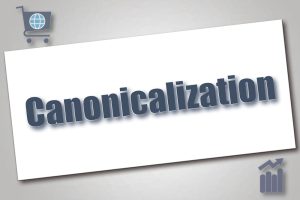In the world of digital marketing, the Call to Action (CTA) is one of the most vital elements for driving conversions. For healthcare websites, effective CTAs are crucial for guiding visitors towards taking specific actions, such as scheduling an appointment, contacting the practice, or subscribing to a newsletter. Without clear and compelling CTAs, visitors may leave your website without engaging, which translates to lost opportunities to attract new patients.
In this blog post, we’ll explore the power of strong CTAs for healthcare websites and provide actionable tips to help you optimize your CTAs for maximum impact.
Why CTAs Are Important for Healthcare Websites
Every healthcare website has a purpose, whether it’s to inform visitors, generate leads, or convert visitors into patients. The CTA acts as the bridge between passive website browsing and active engagement, encouraging users to take the next step toward becoming patients.
CTAs serve several essential functions, including:
- Encouraging Action: CTAs motivate users to take specific actions, whether it’s booking an appointment or signing up for a newsletter.
- Guiding Navigation: CTAs help direct visitors through the user journey, leading them to the most relevant sections of the site.
- Boosting Conversions: A well-placed and clearly worded CTA can significantly increase your conversion rates.
Justin, a healthcare marketing expert, emphasizes that CTAs should be clear, actionable, and strategically placed throughout your website to enhance the user experience and increase engagement.
1. Make Your CTA Stand Out
One of the most common mistakes made on healthcare websites is allowing CTAs to blend into the rest of the content. If your CTA isn’t visually distinct, visitors may overlook it entirely, which can lead to lower engagement rates.
Solution: Use contrasting colors to make your CTAs stand out against the background of your website. Justin suggests using a bold color for CTAs that differ from your primary color scheme, making the button or link highly visible. For example, if your website uses shades of blue, consider using orange or red for your CTA buttons to draw attention. The goal is to ensure the CTA is easy to spot as soon as the visitor lands on the page.
Another key point is to keep the CTA button size large enough to be easily clickable, especially on mobile devices. Make sure there’s enough space around the button so that users don’t accidentally click on other elements.
2. Use Clear and Actionable Language
The wording of your CTA is just as important as its design. The language you use should be direct, action-oriented, and tell the visitor exactly what to do next. Vague or ambiguous CTAs such as “Click Here” or “Learn More” are less effective because they don’t specify the action or the benefit.
Solution: Use concise, action-oriented language that clearly communicates the next step. Justin recommends phrases like “Book Your Appointment,” “Schedule a Free Consultation,” or “Contact Us Today.” These CTAs clearly state what action the visitor should take and imply a benefit, such as scheduling or consulting for free.
Another effective strategy is to incorporate a sense of urgency into your CTAs. Phrases like “Get Started Now,” “Limited Spots Available,” or “Call Today” can prompt visitors to act quickly, especially if they are already considering reaching out.
3. Place CTAs Strategically
Where you place your CTAs on your website matters. Poorly placed CTAs may go unnoticed by visitors, reducing the chances of conversion. It’s essential to place your CTAs in locations where visitors are most likely to take action.
Solution: Justin suggests placing your primary CTA “above the fold”—the portion of the webpage that is visible without scrolling. This ensures that visitors see the CTA as soon as they arrive on the site. For example, your homepage could feature a prominent “Book an Appointment” button at the top of the page.
Additionally, CTAs should be included at the end of every major section of your site, such as at the bottom of service pages, blog posts, and contact pages. This helps guide users through your site and provides multiple opportunities for them to take action.
Sticky headers or floating CTA buttons that remain visible as users scroll can also be effective, especially for mobile visitors who may not want to scroll all the way back up or down to take action.
4. Offer Multiple CTAs for Different Actions
Not all visitors to your healthcare website will be ready to book an appointment immediately. Some may want more information, while others might want to contact your office with specific questions. Offering multiple CTAs that cater to different stages of the user journey can help increase engagement across a wider range of visitors.
Solution: Justin recommends providing several CTA options throughout your site, each tailored to different user needs. For example, you could include primary CTAs like “Schedule an Appointment” for those ready to book, alongside secondary CTAs like “Learn More About Our Services” or “Download Our Free Guide” for visitors who need more information before committing.
Having multiple CTAs allows visitors to choose the option that best fits their current stage in the decision-making process, increasing the chances that they’ll engage with your site rather than leaving.
5. Test and Optimize Your CTAs
Even the most well-designed CTA may not perform as expected. Testing different variations of your CTAs can help you identify what works best for your audience. A/B testing allows you to experiment with different designs, wording, and placements to see which version drives the most conversions.
Solution: Justin emphasizes the importance of continuously optimizing your CTAs. Try testing different color schemes, button sizes, and CTA language to see what resonates most with your audience. For example, you might test whether “Get Started Now” performs better than “Schedule an Appointment.”
Testing CTA placement is also important. If a CTA is underperforming in one section of your site, try moving it to a different location or making it more prominent. Regular testing and optimization can lead to incremental improvements that boost your conversion rates over time.
Conclusion
Effective CTAs are an essential part of any healthcare website, guiding visitors towards meaningful actions and ultimately helping you convert them into patients. By making your CTAs stand out visually, using clear and actionable language, strategically placing them throughout your site, and offering multiple options, you can significantly improve your website’s engagement and conversion rates.
Remember, your website’s CTAs are more than just buttons—they’re the gateway to your practice. With the right design and strategy, they can help you turn website visitors into loyal patients.
Watch the complete interview here:





